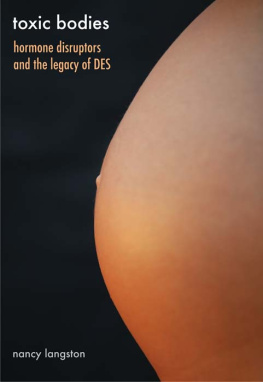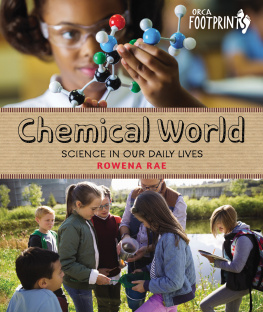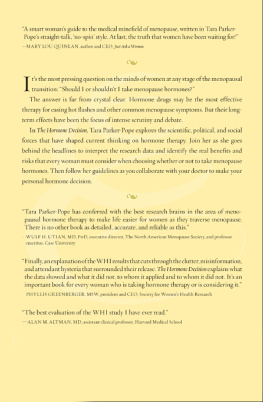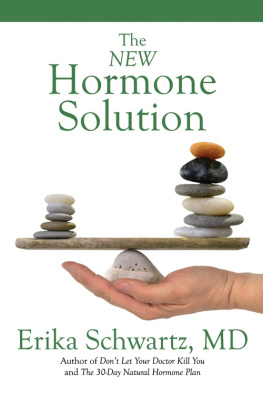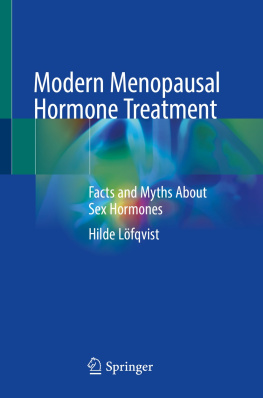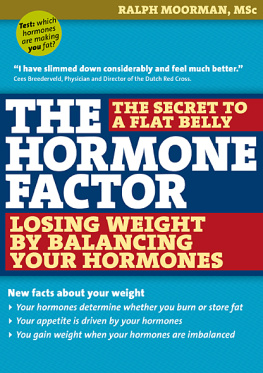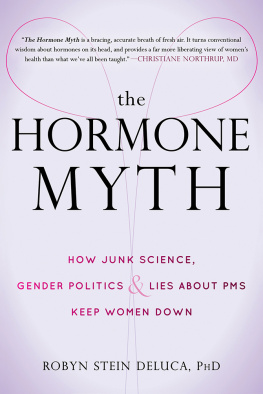Toxic Bodies
TOXIC
BODIES
Hormone Disruptors and the
Legacy of DES
Nancy Langston

Yale University Press / New Haven and London
Published with assistance from the
Mary Cady Tew Memorial Fund.
Copyright 2010 by Nancy Langston.
All rights reserved.
This book may not be reproduced, in whole or in part, including illustrations, in any form (beyond that copying permitted by Sections 107 and 108 of the U.S. Copyright Law and except by reviewers for the public press), without written permission from the publishers.
Set in Galliard type by Keystone Typesetting, Inc.,
Orwigsburg, Pennsylvania.
Printed in the United States of America.
Library of Congress Cataloging-in-Publication Data
Langston, Nancy.
Toxic bodies : hormone disruptors and the legacy of DES /
Nancy Langston.
p.; cm.
Includes bibliographical references and index.
ISBN 978-0-300-13607-4 (alk. paper)
1. Endocrine disrupting chemicals History.
2. Endocrine disrupting chemicals Government policy
United StatesHistory. I. Title.
[DNLM: 1. Endocrine Disruptors adverse effects United States. 2. Endocrine DisruptorshistoryUnited States. 3. Environmental Exposure adverse effects United States. 4. Environmental Exposurehistory United States. 5. History, 20th CenturyUnited States.
6. History, 21st CenturyUnited States.
WK 11 AA1 L285t 2010]
RA 1224.2 .L 36 2010 615.36 dc22 2009025238
A catalogue record for this book is available from the British Library.
This paper meets the requirements of ANSI/NISO Z39.48-1992 (Permanence of Paper).
10 9 8 7 6 5 4 3 2 1
CONTENTS

CHAPTER 1.
Disrupting Hormonal Signals
CHAPTER 2.
Before World War II: Chemicals, Risk, and Regulation
CHAPTER 3.
Help for Women over Forty
CHAPTER 4.
Bigger, Stronger Babies with Diethylstilbestrol
CHAPTER 5.
Modern Meat: Hormones in Livestock
CHAPTER 6.
Growing Concerns
CHAPTER 7.
Assessing New Risks
CHAPTER 8.
Sexual Development and a New Ecology of Health
CHAPTER 9.
Precaution and the Lessons of History
PREFACE

In 2000, I invited Maria, a graduate student at the University of Wisconsin-Madison, to address my undergraduate environmental studies seminar. Maria had grown up along the Fox River in Wisconsin, where paper mills lined the shore. During her childhood, the stench from the mill waste in the river had been so bad that the city of Green Bay had dumped perfume in the water. But perfume could not mask the toxic contamination. In the 1960s the paper companies had manufactured carbonless copy paper coated with industrial chemicals known as polychlorinated biphenyls (PCBs). Few scientists had suspected the potent hormonal effects that PCBs could have on developing fetuses and children, and the chemicals had gone essentially unregulated. Many of the PCBs used by the paper companies had made their way into the Fox River, where they had accumulated in the fatty tissues of fish.
Every Friday night, Marias family had participated in the Wisconsin tradition of the fish fry, going to a tavern to eat their fill of local fish. On hot summer days they had splashed in the cool waters of Green Bay, where the Fox River empties into Lake Michigan. And now, decades later, the river was a Superfund site where various groups contested responsibility for cleaning up the PCBs, chemicals that had become notorious for their toxic properties, particularly their ability to disrupt hormone systems.
Although Maria was training as an environmental scientist, she did not talk to my class about the technical details of her research. She did not dwell on the hormonal effects of parts-per-billion of PCBs. She did not describe the ways that PCBs changed thyroid hormone function or the ways that the chemicals altered brain development and the immune system. Instead, she talked with us about her young child. Should she breastfeed her daughter, she asked us. Maria knew from her research that, as an infant, her child was particularly vulnerable to chemicals that had accumulated into more concentrated and toxic forms. Breastfeeding would reduce the concentration of PCBs in Marias own body, accumulated over decades lived along the Fox River. But she would pass on those chemicals to her daughter, with unknown and potentially tragic effects. Knowing that her own body was a toxic waste site, how could she breastfeed her child? At the same time, knowing that breast milk offered many health benefits to babies, how could she deny those to her daughter?
Like the rest of my class, I was haunted by Marias dilemma. The thought that we have saturated rivers, wildlife, and ourselves with synthetic chemicals with potentially toxic effects began to trouble me. Marias story gave a human face to the accumulating data suggesting that reproductive problems are increasing across a broad range of animals, from Great Lakes fish to people. Many researchers suspect that the culprits are synthetic chemicals that disrupt hormonal signals, particularly in the developing fetus. In the past decade, thousands of experimental studies have shown that synthetic chemicals can alter hormones in laboratory animals and wildlife, while numerous human studies have found correlations between exposure to industrial chemicals and reproductive problems. Endocrine-disrupting chemicals are not rare; they include the most common synthetic chemicals in production. Since World War II, synthetic chemicals in plastics, pharmaceuticals, and pesticides have permeated bodies and ecosystems throughout the United States, often with profound health and ecological effects, yet the government has largely failed to regulate them. How has this massive regulatory failure come about? Given what has been known about the risks of endocrine-disrupting chemicals since the 1940s, why have federal regulatory agencies done so little to protect public and environmental health?
Industry advocates argue that government bureaucracies have held back progress by overregulating chemicals, banning or limiting their use without scientific proof of harm. Environmentalists counter that both laws and ethics forbid the human experiments that would provide that proof. In the absence of complete knowledge, environmentalists argue, what is known as the precautionary principle should guide the regulation of toxic chemicals: if an action might cause severe or irreversible harm to complex systems, the burden of proof should be on the industry to show that it is safe, rather than on affected communities to show that it is harmful.
What can history teach us about scientific uncertainty and the precautionary principle that can help guide the regulation of endocrine disruptors? In Toxic Bodies, I examine the histories of several key endocrine-disrupting chemicals, including the synthetic estrogen diethylstilbestrol (DES), various pesticides such as DDT (Dichloro-Diphenyl-Trichloroethane), and several compounds found in common plastics. In each of these cases, scientists had substantial cause for health concerns when the chemicals were introduced, yet in each case, federal agencies were slow to protect public health.
The most detailed case study in this book focuses on DES, the first synthetic chemical to be marketed as an estrogen and one of the first synthetic chemicals identified as an endocrine disruptor. Beginning in the 1940s, millions of women were prescribed DES by their doctors, at first to treat the symptoms of menopause. In 1947 the Food and Drug Administration (FDA) approved DES for pregnant women with diabetes, and drug companies advertised it widely, promoting the use of DES in
Next page
